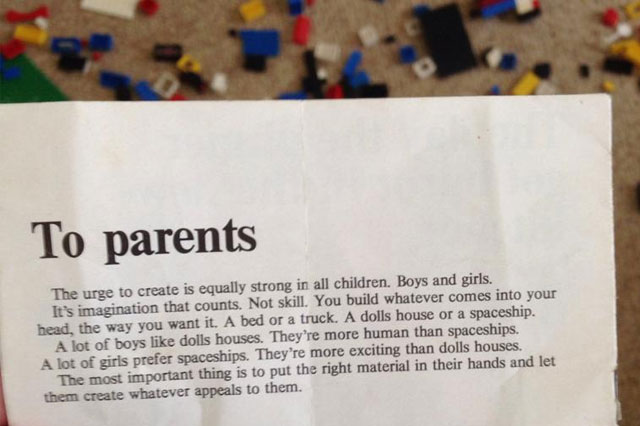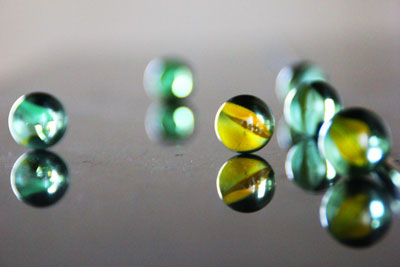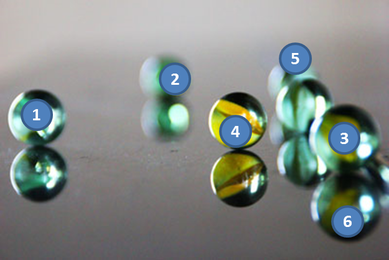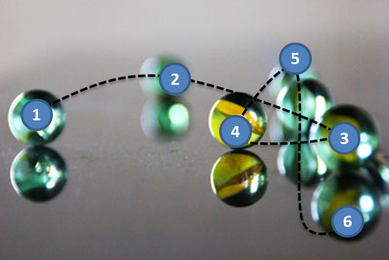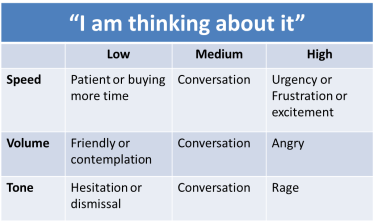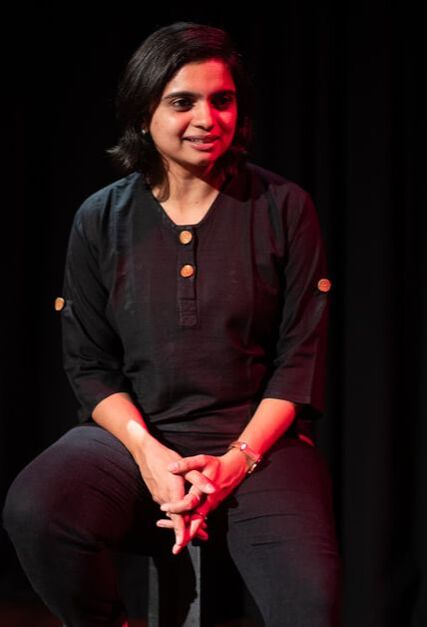|
A few months ago, I was standing in my balcony and talking to my neighbour, 7 year old Angelina. Angel lives and studies in Bangalore. She is a bright, smart and energetic kid in the block and we are good friends. Angel was holding a scale in her hand and scraping it against the balcony grill. When I asked her what she was upto, she said she was readying her knife to cut Paneer. Just as I was imagining Kadai Paneer for dinner, she clarified that it was a game that they played in school. The game was about preparing a meal spread and the children cut up white erasers to make them look like paneer cubes and prepared a feast. I was pleasantly surprised and told her that it was amazing that the entire class came together to prepare Paneer. She was again quick to clarify “Not the whole class. Only the girls.” “Angel, what about the boys?” “Oh they’re always playing silly football games” Hello 2017 and hello to boxing children into doing what is expected of their gender. Our brains are used to working on auto pilot that we mostly just go with the flow. We end up doing things that have been the norm and continue to do so. Unconscious Bias or Big B calls the shots. I am now going to ask you to recall the last time you gifted a child something. It could have been a boy or a girl and it could have been a birthday, a house visit or any other occasion. Think about your gift and ask yourself why you made this choice. Now spend a moment and ask your self if the gift would have been the same if the kid was of the other gender. One one hand, there are traditional gender stereotypes that we end up subscribing to - That boys are good at sports and girls are good at the Arts or that boys play with race cars and girls play with Barbie dolls. So we end up creating experiences for them that reinforce these stereotypes, over and over again. Whether we’re buying birthday presents, toys and books for children or taking them out to watch movies, we’re creating moments of communication which influence and create realities for them. I’m NOT saying DO NOT buy Barbie dolls for your daughter or Cricket Bats for your sons. Just be mindful about the kinds of experiences you are creating for them and the kinds of energies that they are experiencing. Are their experiences enabling them to be creative, strong, caring, nurturing, friendly, competitive and more? Are they experiencing attributes of the masculine and the feminine? I often hear the statement “You are overthinking this. Why can’t you just let it be?” I think the problem is that we haven’t thought about this enough. Being mindful and being aware of your own biases is the first step towards fighting unconscious bias. Saying Hello to the Big B in your brain will make you ask the right questions and you will make considered choices and decisions going forward - from buying a gift to framing opinions. Children are keen observers. My son, who is 14 months old is able to grasp gestures, tones and mannerisms. In a way Big B is already befriending young minds. So Pause, and look at your choices and decisions through the lens of gender. Ask yourself if your statements or actions box children into categories of what is ideal for their gender. Encouarge them to pursue things even if it pushes boundaries of gender norms that society, culture and the media have created for us. That's how you will be doing your bit for #genderequality. Two months ago, my husband and I were visiting friends and their 3 year old daughter . I bought her a punching bag (Girls today need this!) and a mask painting set. When we presented the gifts, our friends was actually quite glad that this was a different choice from the usual pink toys and frill frocks that they received and even before we finished this conversation, the kid was already punching on one hand and had the paint brush on the other, all excited to explore :-) Here is a letter from Lego that reiterates this thought. Well, What was it like for you when you were growing up? What kinds of games did you play and how gendered was your growing up?
In this #artforinclusion series, as part of my work with Interweave Consulting I am presently going to explore unconscious bias and the many ways it creeps into our brains and spills over into our bodies: making us act, react and behave in ways we are not consciously aware of. Stay tuned. #artforinclusion #unconsciousbias #genderbias #Episode2
1 Comment
We know this word. It is part of us and dictates our actions. The Big B leads, making us think and act a certain way. Big B makes us choose A over B. The problem is that we really don't know Big B and yet it controls so much of what we do. I think it's about time we confronted Big B.
Hello BIAS. Alright. Let's play a quick game. You need to basically choose A or B. Ready? MK Gandhi or Mother Teresa? Mac Donald burger or Masala Dosa? Mercedes Benz or Maruti Suzuki? Mountain climbing or Mud Wrestling? Milk or Margarita? Money or Mindspace? Muscle or Machine? Mosque or Mandir? We all choose. BIAS is part of us. It informs us of our likes, thoughts and actions. Now imagine that someone made every choice that you dint make. What is your immediate response? You think this person is SO unlike you. Very different from YOU. Now is when Big B makes an entrance at a very subconscious level and starts deciding your attitude towards this other person, which influences the way you treat this person. You think you are doing everything right but Big B is steering all of it without you knowing. Hello Unconscious BIAS Every decision we make impacts someone or something. From what you wear to work to whom you promote, from decisions that are simple to those that are complex, can we be sure that our decisions and actions enable inclusion on all fronts? Are your decisions in the workplace free of biases of gender, caste, class, language, education, lifestyle and more? In this #artforinclusion series, as part of my work with Interweave Consulting I am presently going to explore unconscious bias and the many ways it creeps into our brains and spills over into our bodies: making us act, react and behave in ways we are not consciously aware of. Stay tuned. #artforinclusion #unconsciousbias #Episode1 In 2012, I was preparing for my first solo, an intimate theatre performance, where I was to share personal moments from my life with the audience sitting around me. I had my lines, my costume and I had rehearsed my act quite a few times. I was confident that I would have a great show. A few days before the show, I invited my mentor into the rehearsal studio to take a look at my performance and give me some feedback. Five minutes into the performance, she stopped me and said that my look was quite intimidating. She asked me soften my gaze and continue my performance. Little did I know that I was intimidating her with my eye contact When we are busy thinking about what to say, to deliver the facts right, we are unaware about the signals we are sending people, through our body, voice and eyes. Our eyes communicate way more than we think they do. People can gauge the mood that we are in and also be able to predict our emotional state by looking into our eyes. Here's how theatre based training can help us make effective connections and communicate powerfully - through Eyetact. Activity: Eyetact- focus and movement Through this activity, we are going to understand focusing techniques and the way our eyes move to address audiences. Step 1: Take a look at the image below. Pick one marble and focus your gaze at that alone for about 10 seconds You will notice that your eyes are quite strained after the 10 second sustained focus. This is because, when we look at one particular point, our focus tends to narrow and our eyes widen. This is typically called hard focus and can be intimidating when you are in a one-on-one situation. The outcome: People in front you can interpret that you are probably angry or irritated. If we kept our gaze in one fixed spot, while addressing a group of people, the others could feel cut off from the conversation. Step 2: Now sit back and look at the entire image for 10 seconds without paying attention to any one thing in particular. You are probably more relaxed and you surely notice more in the image than you did the first time. When we relax our gaze, we let things come into our sphere of vision and don't go in search of something particular. This way, we are able to get a better visual insight from what you are looking at. The outcome: You come across as a relaxed, calm and confident individual. This kind of focus is called soft focus, a friendly, conversational approach to making eye contact. Soft focus is a great way to address a group of people, to inform or inspire. Now that we understand hard focus and soft focus, let's look at how we can move our eyes in a fluid way to make effective connections with our audience. Step 3: Relax the eyes and bring them to a state of soft focus. Take a look at the image below and move your gaze from marble number 1 to marble number 6. Pay attention to the way the eyes are moving. When we are addressing multiple people, our eye contact can tend to be a bit jerky, shifting from one person to another. A simple way to make a smooth transition is to imagine a fluid thread connecting the people in the space. This will make the eye movement and transition smooth and powerful. Step 4: Now repeat the movement from number 1 to 6. You will notice the difference. *Note that it is also important to move your head along with your eyes. Keeping your head stationery and moving only your gaze will look disconnected.
Outcome of theatre based Eyetact training
Did you know that way we speak has 5 times higher impact on communication effectiveness than the words we speak? Did you know that our voice quality can influence our credibility? "A few years ago, I was making a presentation to my CEO on the design of the company's Intranet portal. I was quite excited about my presentation and was raring to go. So when it was my turn, I started by greeting everyone present with a high energy 'Good Morning' and introduced the objective of my presentation. Even before I moved to slide 1, the CEO remarked, 'You are too loud. Can you soften your speech please?' Though my presentation went well and I received a go ahead on the project, this comment was playing in my mind throughout the meeting and afterwards." When we are unaware of our voice patterns, we can end up being too loud in a conference room or too fast in a team meeting and lose the audience's attention at important moments. We need to carefully understand the intent of our speech, our physical environment and project a suitable voice quality. Each of us have a unique voice and our voice scales are different. We need to understand which scale works for us in different scenarios and adapt our voices accordingly to communicate the desired message. Activity: VQ Scale (Here's a Voice Quotient scale for you. 1 is the lowest and 10 the highest. 5 is a comfortable middle) Now here's a line for you: "I am thinking about it" Step 1: Read the line aloud at a comfortable volume. Step 2: Use the Pace Scale provided below and say the same line at a high speed and then at a low speed Step 3: Now say the same line in a high volume and then in a low volume using the Volume scale Step 4: Now say the same line in a high tone and then in a low tone. Did you notice how the various high & low combinations influenced the emotion and the mood that came through ? Our speech speed, tone and volume certainly contribute to the way we are perceived. The physical space and the context also influence the communication intent and message.
Outcome of Voice Quotient Training through theatre
"Here's the project vision and these are the desired outcomes"
This is a line you will hear quite often in meeting rooms and conferences. When projects are outlined, team members have to possess the ability to visualise outcomes. From envisioning product designs and packaging to new concept developments to consumer understanding, one has to be able to combine skills of imagination with knowledge and creativity. How does one train to visualise better? Are there ways to develop imagination skills? Theatre based training can enable visualisation and help participants understand the power of detailing, visual population and creative thought. Activity: Imagineer (Read the description below. Once you've finished, take 30 seconds and then scroll down to look at the questions) "He is wearing a striped blue tie. The tie has the letters KC embroidered on it. There is a metallic pen in his shirt pocket. You can smell musk. You hear the words, "Are we ready for this?" There is a moment of silence. He pulls out his pen, opens it and signs a document. There is applause and he smiles jubilantly." (Take 30 seconds now and imagine the scene) Now that you have a visual frame of this event, try and answer these questions. 1. What was the man's name? 2. What was the colour of his shirt? 3. What kind of hair did he have? 4. How tall was he? 5. Did he have a beard? 6. Were there paintings in the room that he was in? 7. What was the shape of the table? 8. What time of the day/night was it? 9. What brand of perfume was he wearing? 10. Was coffee/tea served at the table? How many questions did you have the answers to? We often default to the stated observations; limiting ourselves by what is available and provided, hence not seeing the bigger picture. By going beyond the obvious, by including what lies in the periphery – by imagining better, we are able to create a richer picture and a more compelling vision. When the mind trains to process information as visuals, it enables individuals and teams to develop the skills to look at fine details as they are composing the image in their mind's eye. Process: By playing characters or by portraying a variety of situations through their bodies and voice, one develops the ability to quickly fill up visuals with information to get an idea of the bigger picture. When they observe fellow participants going through the same process, they understand the possibilities and the different ways in which an idea can be portrayed. This enhances their field of imagination and builds up their image bank, which comes in handy the next time they set out to visualise a situation. Some situations where this could be of help
|
Archives
March 2020
Categories
All
|

